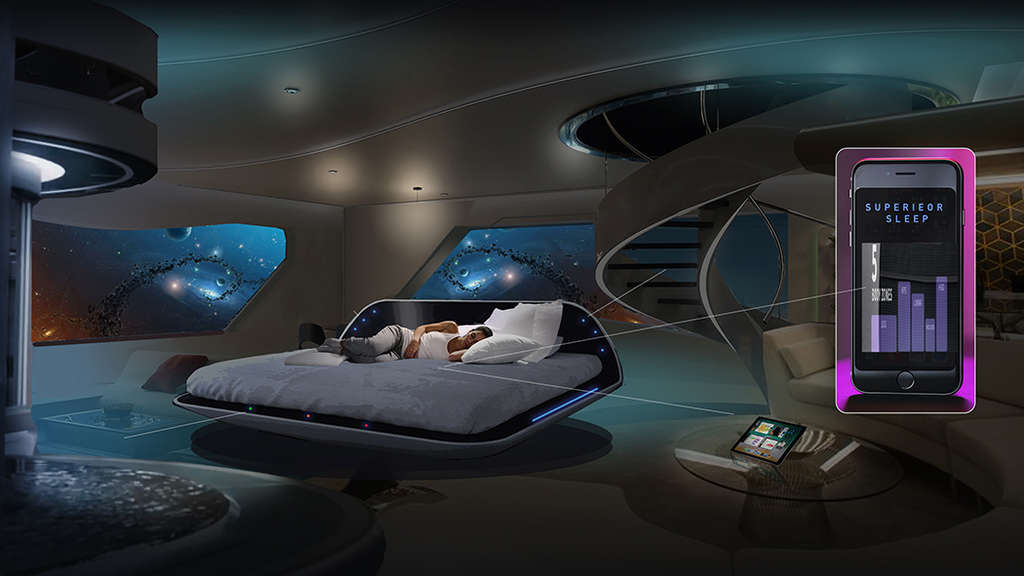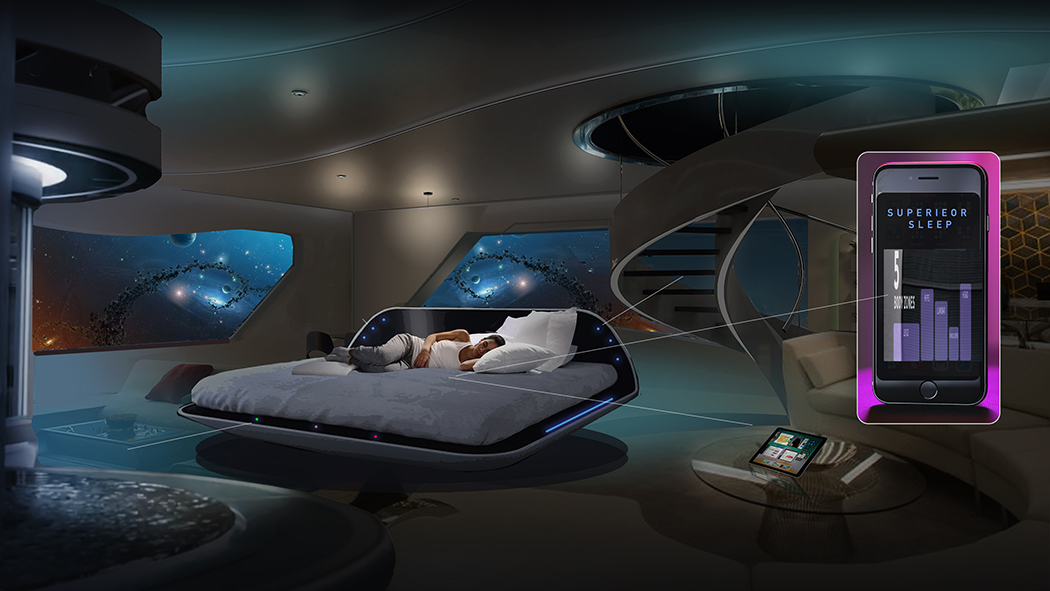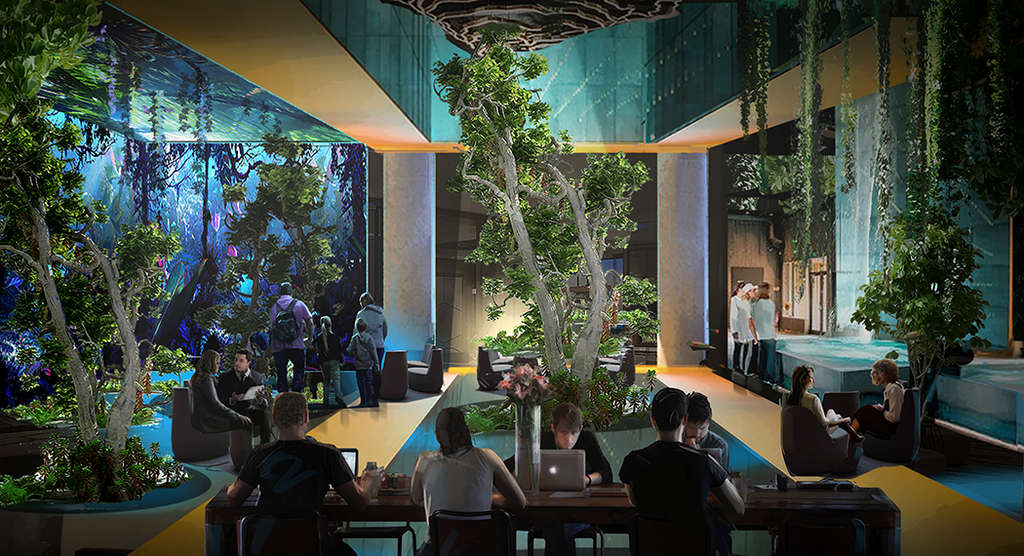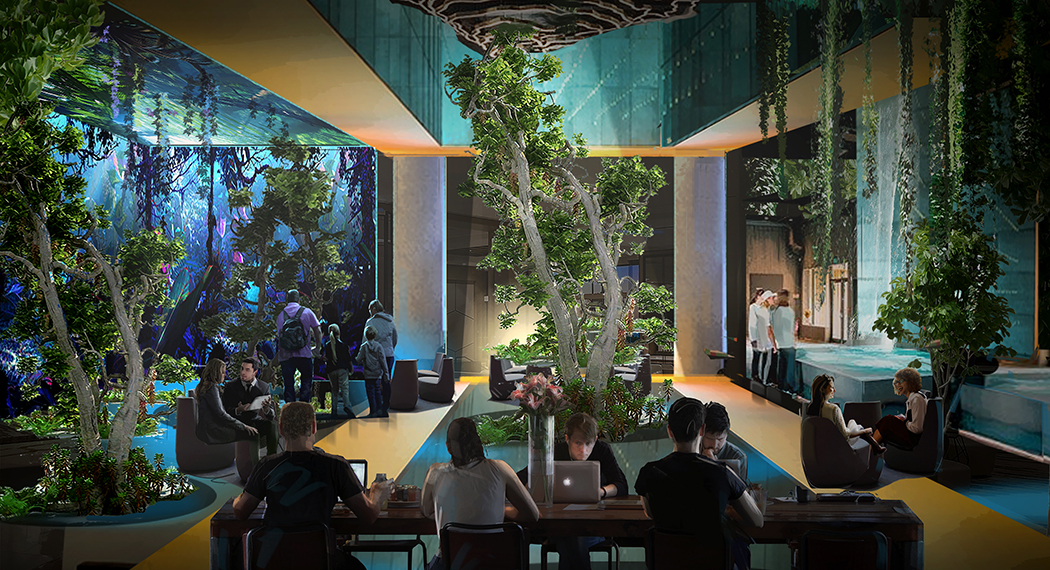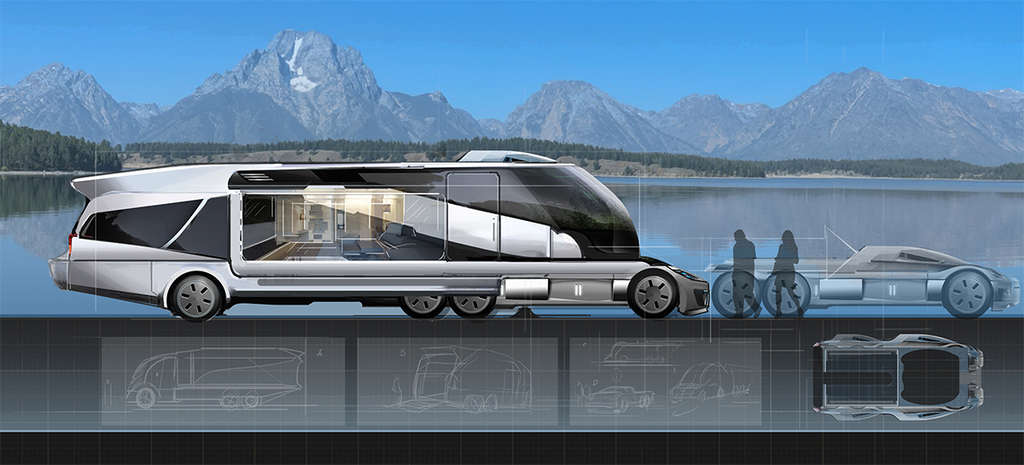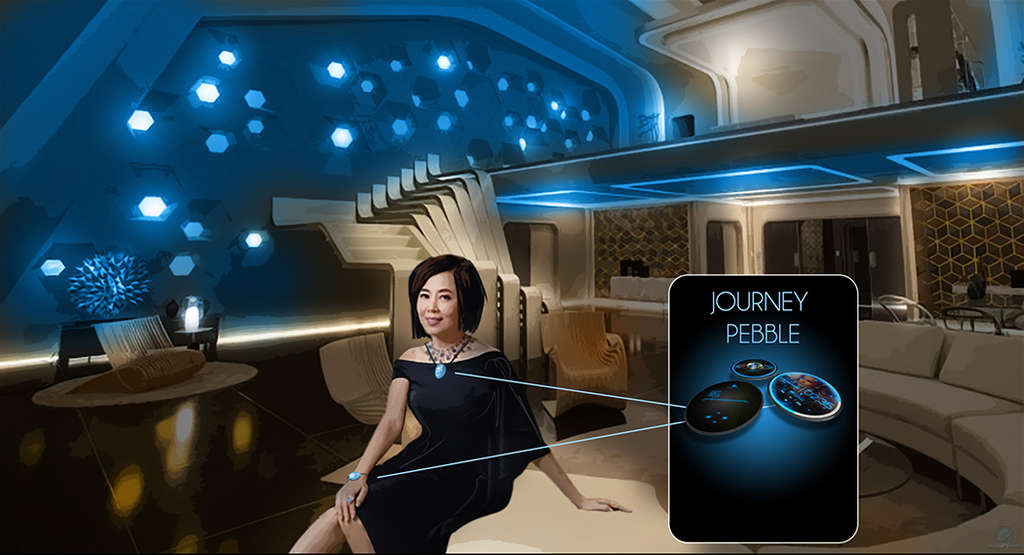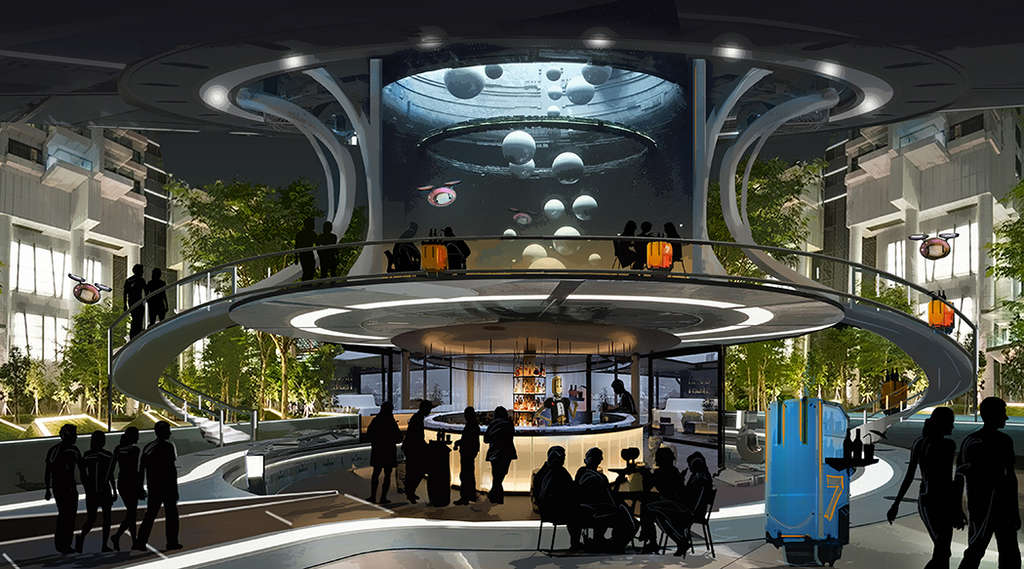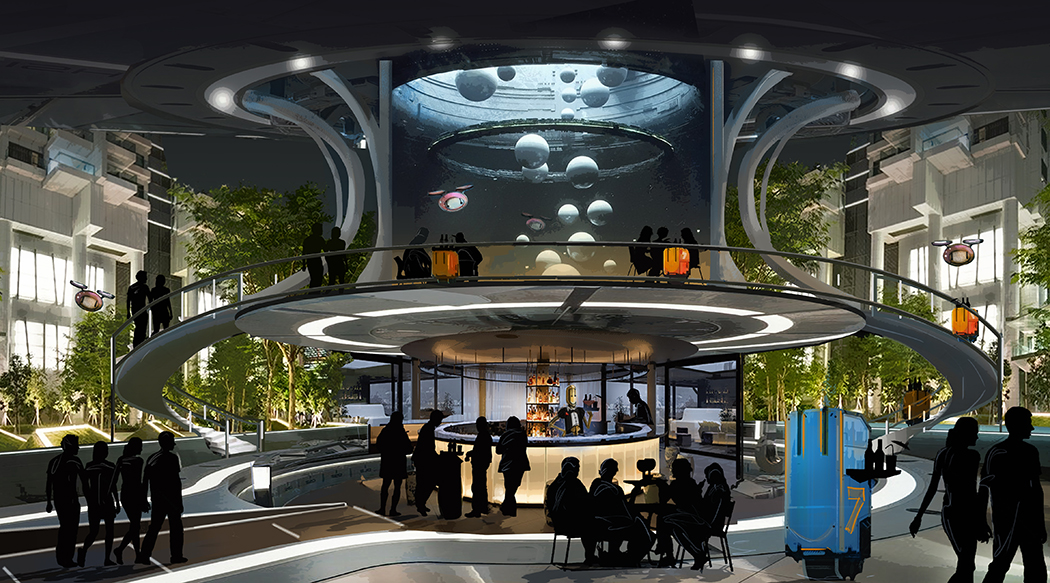The Hotel of Tomorrow® Project - Five Big Ideas and the Trends That Drove Them
When we restarted The Hotel of Tomorrow® Project back in June, we didn't know where the project would ultimately lead us, but we were eager to start solving the new design and operational challenges facing our industry. These new complexities meant that we needed to both widen our view and the types of contributors to our think tank: technologists, University researchers, operators, investors, brands, associations, manufacturers and consultants.
We asked ourselves, "What hotel and travel challenges and opportunities did the pandemic create? What will future guests expect, and how might we deliver solutions and services in the short and long term? And, how can we best collaborate immediately, around the globe?"
We called out to our many friends in the industry—peers, clients, brand partners, and their connections—and they were eager to contribute, learn and apply the ideas and insights.
325 industry leaders came together at two levels of engagement. We assembled a database of articles to track what was being explored and applied elsewhere to serve as inspiration. We then created 16 teams, consisting of hotel designers, manufacturers, owners, and operators from around the world who ideated as industry partners to envision The Hotel of Tomorrow® Project—every aspect of the development, service and guest journey.
We are particularly grateful for the expertise and contributions of Chad Reynolds of Batterii, Gayatri Keskar of Material ConneXion, Matt Phillips of Phillips & Company, Maxwell Luthy of TrendWatching, Adam Kubryk of Global Allies and Jason Schwartz of Bright Bright Great.
79 powerful ideas were narrowed to 16, then tested and further narrowed down to five. We then surveyed industry experts to gauge the most viable ideas for the future. We are pleased to reveal the results below, presented with the most viable ideas at the top.
01 / Bed XYZ
An optimized sleep platform devised to control and monitor the restorative value of sleep and the guests' regimens prior to sleep.
Engineered fabrics control bed temperature and act as air purifiers. Fully-integrated functions within the bed program the lighting, temperature, and scent, audio and noise cancellation, mattress feel and position and most valuably, monitor the guests' quality of sleep, reporting the restorative results when they awake.
A variety of pre-sleep rituals are available for guests to experiment with, including: low-impact exercise and meditative programs through the in-room audio-video display and in-room food and beverage items designed and selected to help transition to sleep.
Max Luthy: Focusing on the "why?" around this idea… There is a larger trend that this plays into—Consumers are looking to outsource to artificial intelligence that is smarter than they are, ie: retirement planning or other app-based tools. This is outsourcing sleep evaluation to a holistic tool.
Ron Swidler: Fascinating! And yes, this is where design, sensors and data help to deliver a new form of personalized wellness. We already trust hotels to keep us safe, this is a whole other level of being cared for.
02 / Outside In, Inside Out
Re-envisioning public areas, this concept mimics and integrates the outdoors within interior spaces like lobbies, pre-function areas and meeting rooms. Simulating outdoor lighting, air quality, sounds and scents, it would mitigate the sense of interior confinement and offer the same state-of-mind benefits offered outdoors. Installations of living and preserved plants, nature-derived and artist-enhanced video imagery, projection mapped imagery and accompanying surround-sounds are intended to create passive entertainment in an alluring environment, one that can induce gathering, creativity and enhance productivity.
Max Luthy: We have become accustomed to the rewritten rules of what can be done where, ie: being read a Slack post while driving, or sending a text while running along the ocean shore. This is a like a judo move that flips the convention of a space and opens it to new possibilities in how we use it.
Ron Swidler: We talked about the Peloton Effect—the idea that an indoor, air-conditioned ride with an instructor and course of my choosing could be better than a ride outside—this space is like that. It is like inhabiting an idealistic simulation or video game. Hello, Truman Show! If convincing and beneficial enough, it could be mind-altering services, rather than mind-altering drugs.
03 / Hotel Rover
A self-driving adventure vehicle that provides mobil hospitality on the road and at host hotels. The autonomous, electric vehicle is designed for comfort on the road and in the wilderness. Designed for work, sleep, socializing and transport it comfortably houses one to four guests. Co-branded, partner hotels provide the rover guests the amenities, spaces and services of the hotel (recharging, housekeeping, room service and concierge). This solution expands the number of beds and services available to guests well-beyond the limitations of a single hotel and into the world and its companies. AI-powered digital assistance, guidance and entertainment is available through voice command, touchscreens and an app as a way to extend the hospitable service of the hotel brand into the vehicle.
Max Luthy: This could be ai-powered travel where guests choose from a set of preference-informed travel destinations like Spotify does for Weekly Playlists.
Ron Swidler: The Hotel Rover meets a number of emerging and tried-and-true consumer demands, including: romanticized nostalgia, untethered exploration, exclusivity and both autonomy and autonomous vehicles. It literally can break the hotel free from its foundations.
04 / Journey Pebble
Loan your preferences to your hotel. Receive special offers for your data.
A digital, encrypted wearable that shares the guest's preferences with the hotel to provide a seamless and personalized stay. Utilizing this data, the hotel staff can not only meet a guest's expectations, but suggest additional services and programming that complement the wish list he or she has provided. Data from your Pebble can be updated in real-time, notifying the hotel of your changing desires. The hotel, through its Pebble interface, can communicate with guess and allow for guest-to-guest communications (if that feature is activated). The result is a guest-controlled preferences and communications platform.
Max Luthy: Today, there is a blurring of our digital and real-world identities. The Journey Pebble is a tactile, magical object that bridges both, but is not nearly as invasive as a smartphone. That is part of why this is so appealing.
Ron Swidler: We have actually been talking to a company about making this idea a reality. Unbundling, and securing our identities from our phone wrests control of our data back to the user allowing more control and opportunities to be rewarded for sharing our preferences and actions.
05 / Robot Alliance
A deconstructed food-and-beverage experience where robots with distinct purposes and personalities allow guests to drink and dine outside of a traditional restaurant or bar's footprint. Small refrigerator/warming units follow guests like companion animals, then double as side tables or dining surfaces wherever the guest might like to be—inside or outside the hotel. The larger counterparts of these units become gathering hubs, with integrated audio-visual components that allow small groups to enjoy music or take in a movie or game together. Small drones communicate guests' needs back to a bartending robot—overseen or AI-powered by a skilled mixologist—that can deploy a refreshed unit. Robots speak to one another in beeps and whistles, and to guests in whatever language they require.
Max Luthy: This one ticks all the boxes for me: automation/robotics, drones, autonomous mobility, real-time language translation and AI-enhanced offerings and are the sci-fi that are recoloring our world.
Ron Swidler: Yes, this solution, and frankly all the others, seem simultaneously possible today and likely real tomorrow. The Robot Alliance could solve an enormous problem for hospitality: How to deliver service on demand, to anywhere (or at least further away), anytime, at a lower cost.
Conclusion
The five ideas shared above (with gratitude to image wizard, RC Aradio of BlueCore Creative) are only a small, representative sample of ideas generated by The Hotel of Tomorrow® Project.
We set out to rethink the design of environments and experiences at hotels and restaurants, considering the new demands and expectations resulting from the Coronavirus pandemic. What we discovered was vast and deep creative thinking from the many integrated thinkers who shape our industry's future.
We will continue to advance the thinking and mission of the Project through the generous support and programming integration of our many university partners, hotel partners, clients and friends in the industry. Please watch The Hotel of Tomorrow® Project website for more information about upcoming events.
About The Gettys Group
The Gettys Group is a family of hospitality-focused companies dedicated to creating the inspired moments that stay with guests and the defined details that enrich brand. For more than 30 years, they have guided developers, operators, and brands in the creation of meaningful and rewarding hospitality experiences around the world. Whether they are designing interiors for all tiers of the chain scale, directing program management for new developments, launching exciting brands or demystifying the procurement process – they elevate and transform, make things easy and create value. For more information, please visit gettys.com.
